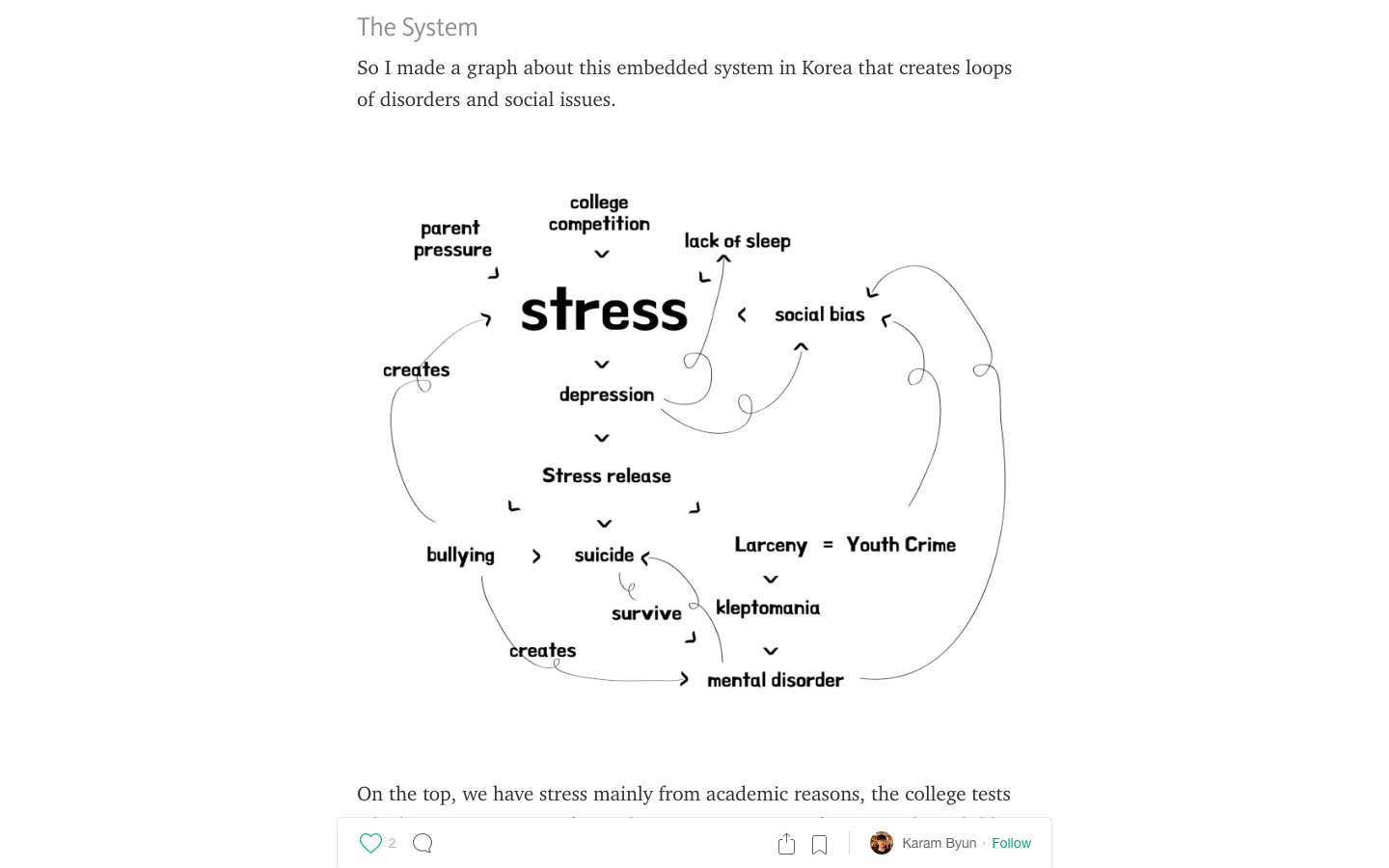A Digital/Graphic Designer.
A Creative HTML Developer.
YOUTH CRIMES AND DATA ANALYSIS
How do you use governmental free data to make meaningful impact?
This project is about making an artistic statement with free data, disguised as a data analysis post. The project starts in the permise that governments will not publish free data detrimental to their image. It was a stab at making meaningful posts with so little data.
Largely separates into two responses:
•the offended by finding no real data analysis;
•the enlightened to have emotionally be affected by the woven story.
Originally posted as "Data analysis in the relationship between youth crimes, stress, depression, college scholastic ability tests in Korea." Full analysis post. More @Medium
Relationships between Youth Crimes, Stress, Depression, and College Scholastic Ability Tests.
Using open governmental data from Seoul, Korea.
Excerpts:
As we compare with America, Korea likes to play a bit differently, they have a high steady juvenile crime rate between April and November, where October is the month with the highest crime incident. It is peculiar isn't it? There should be nothing going on October. First term starts around March and we see a rise in crime, which according to the BJS is normal. Summer vacations are usually between mid-July and end-August, where we see high crime rates, which is also normal. Second term resumes around late-August, which there is nothing peculiar about it. And winter vacations is late-December. Normally for September, October, November there should be a steady decline in juvenile crimes, but not Korea. So I wonder why?
But what if I said this academic stress was the major problem in creating all the heavy issues in Korea? And that this embedded education system in Korea is absolutely a system of making psychological disorders?



